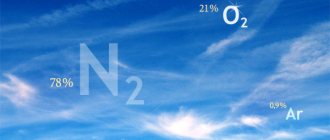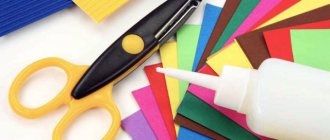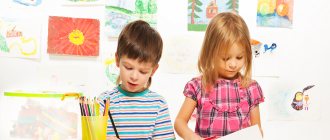Summary of a lesson on cognitive development in the senior group. Water and its properties
Summary of joint activities on cognitive development (Natural world) in the older age group of kindergarten on the topic “Magic droplets”
Joint activity “Magic droplets”
Goal: to create conditions for the development of cognitive interests, the need for independent search activity on the basis of an enriched and formed emotional and sensory experience. Objectives:
• Clarify and expand children's knowledge about water, its properties and importance for life and health.
• Develop the ability to build hypotheses about the signs and properties of water. • Continue to strengthen skills in conducting experiments. • Develop the ability to independently draw conclusions based on practical experience. • Contribute to the formation of mental operations, speech development, and the ability to give reasons for one’s statements. • Foster curiosity and respect for water. • Foster independence, the ability to understand a learning task and carry it out independently. • Foster interest in experimentation, cultivate accuracy when working with water. Methodological techniques: conversation-dialogue, game situation, physical education session, experience, experiment, productive activity of children, analysis, summing up, questions, individual answers of children. Equipment: A foam cloud with droplets attached to it on a fishing line. Lapbook “Water”. Globe. Background picture “water cycle in nature”, color silhouette pictures of the sun, droplets, clouds. Bucket. Jug. Scissors. Thermos with boiling water. Mirrors. Empty jars with cloth instead of a lid. Audio recordings and pictures: “Stream”, “Sea”, “Waterfall”, “Rain”. Ice, 4 glasses, water, 1.5 l. bottle of soda, grapes, 3/4 cup of water, ice, sunflower oil. Preliminary work: Conducting experiments “Let’s find out what kind of water”, “Aggregative states of water”, “Solubility of substances in water”.
Reading the fairy tale “Two Streams”. Drawing using the "wet" technique. Observation of water in nature (rain, fog, snow, ice, frost, icicles, puddles, sea). Examination of the paintings “Flood”, “Hail”, “Desert” from the series “Let’s tell children about nature”. GCD move
Introductory part
Educator: Good morning, guys! Today we have guests. Let's say hello to them and give them our good mood. (Children say hello). Educator - Guys, today we have a difficult lesson. We will work again at the Pochemuchek Laboratory. Interesting experiences and discoveries await us. You are ready? (Of course we are ready). Greeting game (Children repeat words and movements in accordance with the text).
Hands up, hands down, and spin around in place.
One - clap, Two - clap, Make a turn again. Jump, jump - smile And turn into a laboratory assistant. Surprise moment “Cloud with droplets”. Educator - Close your eyes and get ready to get acquainted with the main object of our research in the “Laboratory of Whys”. (Quiet music sounds, a cloud with droplets is brought in.)
Running down the mountain without difficulty, It thunders like thunder.
On a frosty day it is hard - you can even cut it with an axe! Heat it up and then it will fly to the heavens. Now anyone will answer us: Her name is ... (water). Educator - Today wonderful droplets will play with us, teach us new and interesting things. And those children who are especially diligent and active will be able to cut off the wonderful drops and put them in this jug. (As the lesson progresses, each drop is cut off by one of the children and placed in an empty decanter).
Main part
1. A droplet is thrifty
- The first droplet is a droplet that is thrifty.
She brought you this item. (Show the globe).
Are you familiar with this item?
What is it called? (Children make assumptions).
This is a globe - this is what our planet Earth looks like, reduced many, many times.
Educator - The blue color on the globe means... what? (Water).
Do you think there is a lot of water on our planet?
Let's spin the globe quickly and quickly. It seems that the entire planet is blue - covered with water. Indeed, there is a lot of water on Earth. But almost all of it is in the seas and oceans, which means what does it taste like? (The water in the sea is salty).
Salty.
Is salt water okay to drink? (No, salt water is not suitable for drinking). Educator - There is not very much unsalted - fresh water on our planet. There are places on earth where people lack fresh water. That is why you cannot waste it in vain. Fresh water must be conserved. 2. The learned droplet Educator - The second droplet - the learned droplet wants to introduce you to how water travels. Didactic exercise “Water cycle in nature” Educator - Water enters our homes through pipes from rivers and lakes. What do we use water for? (For drinking and cooking, we wash with water, wash in water, clean, water plants). Educator - Do you need a lot of water for this? (A lot of).
How is it that people still haven’t used all the water, why isn’t the water running out?
This is what the learned droplet will tell you about. Place pictures in front of you. Take a drop and put it in the river. — Every day the sun rises in the sky. Put the sun in the picture. (Children complete tasks).
The sun heats the water in rivers and seas.
The water is heating up. I poured heated water into this thermos. Let's open the lid and see what happens to the heated water. (The teacher opens the thermos, steam rises from it).
— What does water turn into when heated?
(In steam).
Where does the steam go?
(The steam moves up towards the sky.) (Thermos closes). Educator - That’s how our droplet heated up and rose up in the form of steam. Move the droplet to the sky and place it on the cloud. Educator - A droplet has cooled in the sky. Because the higher you are from the ground, the colder the air becomes. - Let's open the thermos again and apply a mirror to the steam coming out of it. Let's cool. Look at what the steam that hit the mirror turned into after it cooled down? (The steam turned into water droplets.)
Here in the picture, the cooled droplet again became water.
But she wasn’t the only one who went to heaven—there are still many of her droplet sisters with her. And the cloud became a heavy rain cloud. Cover the cloud with clouds. Soon it began to rain from the cloud, during which our droplet, along with its sisters, fell to the ground. Move the droplet to the ground. — Droplets of rain fall on the ground and flow into rivers and seas. So the water resumes its path. It begins its journey again, heating up and rising in the form of steam. This path of water is called the “water cycle in nature.” It rotates in a circle - a cycle. Let's repeat and try to remember these words “water cycle in nature.” 3. Sounding drop Didactic game and gymnastics for the eyes “Songs of Water”. On the ophthalmic simulators under the ceiling in the corners of the room there are pictures of “Stream”, “Sea”, “Waterfall”, “Rain”. Waterfall
Falling from a great height, the waterfall roars menacingly.
And, breaking against the stones, it rises up like white foam. The sea
is wide in width, deep in depth, day and night it beats against the shore.
Stream Stream
runs along the mountain slopes, chattering to itself, And in the thick green grass, hides its blue tail.
Rain
Wet the grove, forest and meadow, City, house and everything around!
Clouds and clouds - he is the leader! Rain waters the earth. (Children listen to audio recordings with the sound of water in a stream, sea, waterfall, rain and, turning their heads, look with their eyes for a picture that matches the sounds). 4. The droplet is curious. Educator - And this droplet is very curious. She wants to know what you know about water. -What kind of water is there? Choose words that answer the question “what kind of water?” (Water can be salty, fresh, hot, cold, clean, dirty, sea, river, sweet, carbonated).
— What form does water come in?
(Liquid, solid (snow, ice, hail), gaseous (steam). Educator - I just prepared for you two glasses of tap water and ice from the street. - What does the water taste like? - What does the water smell like? - What color is the water? - What is the shape of the water? (Water has no taste. Water has no smell. Colorless, transparent. Water takes the shape of the object into which it was poured.) 5. Playful droplet . Dynamic pause “Cloud and droplets.” (Children perform movements according to the text.)
I am your cloud mother, And you are my droplet children, Let the cloud make friends with you, And the cheerful wind whirl around. Quickly get up in a round dance, And repeat with me: We will walk merrily and smile! With our hands wave and bend down to the sun, To water the plants and give water to the animals! We will wash the earth ourselves and return to the mother cloud.
6. A droplet is a researcher. Educator - And this droplet invites you to explore the water. Go to the tables, on each of them there are the necessary things for the experiment objects. (Children go to the tables.)
At table 1, the guys will compare tap water and melt water.
(They look at melt water. The water in the cups is the same).
They are very similar.
What's the difference? (Melt water with debris, dirty). Educator - The title of laboratory assistant requires verification! To do this, you need to run tap water through cheesecloth. (Children filter the water through gauze and examine what remains on the gauze). Educator - What do we see after passing water through gauze? And after melt water? (Speak out). Educator - Unfortunately, in the pipes that bring us water, the water is not very clean. But people figured out how to purify the water. Tap water must be boiled or passed through a filter. Snow and ice are melted, dirty water that is not suitable for drinking. But such water can be used to water indoor plants. It will be useful for them. At table 2, the laboratory assistants will open a bottle of sparkling water and throw in grapes.
What's happening? Why? (Children follow instructions, observe, express opinions).
Let's compare the result with ordinary water.
At table 3, the guys will take a piece of ice and put it in the water. No matter how you drown the ice, it will still float to the surface. But you can make sure that the ice does not float. You need to pour in sunflower oil (3/4 cup). The oil will rise and the ice will no longer emerge. It will be between water and oil. (Children follow instructions, observe, express opinions). 7. Droplet is a sorceress.
And this droplet wants to show you
the Lava Lamp trick.
Come closer to me. (Children approach the teacher at a safe distance.)
We will need a wine glass, 3/4 glass of sunflower oil, water, dye (from a syringe). Separately combine 1 tsp. baking soda, 3/4 spoon of citric acid => mix and pour into a glass with oil. Add a few drops of dye. Slowly pour water. And enjoy!
Final part
Educator: Well, guys, were the experiments with water interesting? (I liked it very much!).
Which drop did you like best?
(Children speak out). Children read poems: 1. Magic droplets gather in rivers and try to give water to the whole Mother Earth. Everyone needs water - both birds and blades of grass. Animals walk along paths to watering holes. 2. And little children need water more than anyone else - We grow with it, we get healthier with it. We now know how to save water - it won’t just flow from the tap! 3. We have a plumber, he always makes sure that wonderful water does not drip anywhere. Now repeat it all together: Save water, save water! The carafe with drops is replaced with a carafe with clean drinking water. Educator - All the droplets wish us health and give us clean, healthy water that everyone needs! I suggest you try it. (Children take cups of water and drink).
We recommend watching:
Summary of GCD on cognition in kindergarten in the senior group “Journey to the Fairytale Forest” Summary of GCD with children of the senior group on experimental activities. Properties of water Summary of a lesson on educational and research activities on the topic: Properties of water. Second junior Summary of a lesson on environmental education in the middle group. Properties of water
Similar articles:
Summary of GCD in the senior group of kindergarten. A dog is man's friend
Three states of water
Substances, depending on their freezing, melting and boiling temperatures, can be found in nature in three states of aggregation - solid , liquid and gaseous . Water freezes at 0°C and boils at 100°C.
In everyday life, we can encounter water in any of its three states, and its form is constantly changing. Liquid water evaporates and turns into a gaseous state - water vapor. It condenses and turns into liquid. At sub-zero temperatures, water freezes and turns into solid ice.
If we place table salt crystals in a vessel with water, we will be able to observe how the amount of solid substance gradually decreases. At the same time, water acquires new properties: it acquires a salty taste, density and freezing point change. The resulting liquid can no longer be called water, it is a solution. Intermolecular bonds arise between salt and water molecules, due to which salt molecules are detached from the surface of the crystal.
Artesian water
Agree, it is somewhat unusual to call water a mineral: it is all around us, flowing in streams and rivers, splashing in the seas and oceans, even pouring from the sky. And yet this name is correct. Think about wells and artesian wells. Isn't it necessary in these cases to extract water literally from underground? Artesian water is water located at a depth of 50-200 m and enclosed between impermeable layers. Such water is reliably protected from external pollution.
Well structure
Energy source
Water is an important source of energy. The power of moving water is very high, so it is used to generate electricity. Hydroelectric power plants are built where water moves at high speeds, such as rivers. In addition, artificial structures, such as dams, which create water movement, can also be erected.
Construction of a hydroelectric power station
Water flowing from the upper level to the lower level through special turbine pipelines acquires greater speed. The stream of water then flows onto the blades of the hydraulic turbine and rotates them. This is how energy turns into mechanical energy. The generator connected to the turbine rotates and the mechanical energy becomes electrical. Transformers convert electricity into the required voltage. Electricity is sent through transmission lines to distribution stations.
Share link




